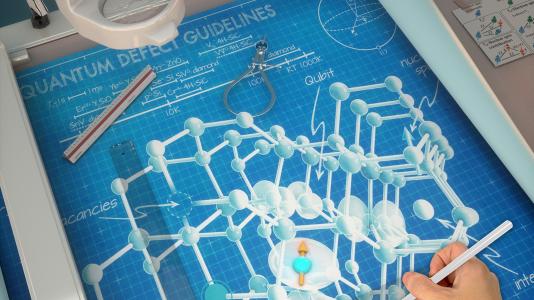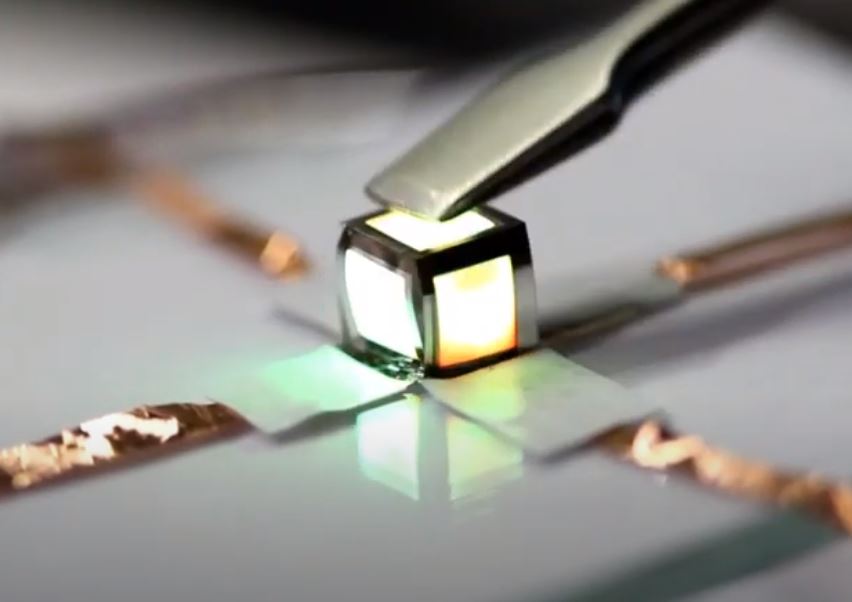(Argonne-led research team highlighted in special issue on quantum systems)
2021-10-18 アメリカ合衆国・アルゴンヌ国立研究所(ANL)

・ ANL、シカゴ大学、日本、韓国およびハンガリーの研究機関による研究チームが、量子科学の重要なプレイヤーとして急速に新興している欠陥付き結晶に関するガイドラインを発表。
・ 結晶構造に意図的に付与される不規則性の欠陥は、量子情報の基本ユニットである量子ビット(qubits) のトラップのような役割を担う。量子材料の開発は、量子科学から実用的でスケーラブルなデバイスへの移行を支援するもの。
・ 量子ビットには、研究室で作製する分子、特殊な超伝導回路を移動する電子やダイヤモンド小片深部の欠陥に捕らえられた光の粒子等の形態がある。本研究のフォーカスは、固体スピン量子ビット(スピン:情報処理に用いる電子の量子特性、固体材料:ダイヤモンドやシリコン等の絶縁体や半導体を作るもの)。
・ 半導体量子ビットの利点の一つは、集積デバイス・回路やナノファブリケーション等の既存の固体半導体技術の多くを活用できること。コンピューティング、通信やセンシングの各用途に合わせて量子ビットを作製することで、パワフルで新しい情報処理方法を開拓できる。
・ 実用的な量子ビットの開発は、未来の量子技術の鍵となるもの。量子センサーの優れた分解能では分子レベルでのヒトの細胞の研究が、量子通信ネットワークでは傍受を回避する情報送信が、また量子コンピューターでは複雑なシミュレーションを通じた迅速な医薬品の開発等がそれぞれ可能となる。
・ 本ガイドラインでは、ホスト材料と欠陥の両方に配慮した、固体スピン量子ビット材料の特性、エンジニアリング時に考慮すべき事項と可能なアプリケーションについて提示。ホスト材料と欠陥の間で起こる複雑な相互作用に加え、特定のアプリケーションに合わせた調整を必要とする複合的な特性に注目する。
・ 例えば、赤外線信号を利用する光ファイバーとの互換性を考慮して設計される量子通信デバイスには、可視光領域よりも赤外領域で光を送る量子ビット材料が、また、量子センサーには可視光スペクトルを容易に検出する材料が適する。
・ 本研究は、米国エネルギー省(DOE)科学局 基礎エネルギー科学部(BES)の材料科学・工学部が支援した。
URL: https://www.anl.gov/article/argonneled-research-team-highlighted-in-special-issue-on-quantum-systems
<NEDO海外技術情報より>
(関連情報)
Nature Reviews Materials 掲載論文(アブストラクトのみ:全文は有料)
Quantum guidelines for solid-state spin defects
URL: https://www.nature.com/articles/s41578-021-00306-y
Abstract
Defects with associated electron and nuclear spins in solid-state materials have a long history relevant to quantum information science that goes back to the first spin echo experiments with silicon dopants in the 1950s. Since the turn of the century, the field has rapidly spread to a vast array of defects and host crystals applicable to quantum communication, sensing and computing. From simple spin resonance to long-distance remote entanglement, the complexity of working with spin defects is fast increasing, and requires an in-depth understanding of the defects’ spin, optical, charge and material properties in this modern context. This is especially critical for discovering new relevant systems for specific quantum applications. In this Review, we expand upon all the key components of solid-state spin defects, with an emphasis on the properties of defects and of the host material, on engineering opportunities and on other pathways for improvement. This Review aims to be as defect and material agnostic as possible, with some emphasis on optical emitters, providing broad guidelines for the field of solid-state spin defects for quantum information.



